 (Photo: Shira Golding Evergreen / Flickr)With Americans' interest in socialism rising, we need to seriously consider alternative designs to the current system, argues Alperovitz, in this practical critique of some known models.
(Photo: Shira Golding Evergreen / Flickr)With Americans' interest in socialism rising, we need to seriously consider alternative designs to the current system, argues Alperovitz, in this practical critique of some known models.Saturday, April 13, 2013
The Question of Socialism (and Beyond!) Is About to Open Up in These United States
This is a really interesting, enlightening, thought-provoking and educational read; anyone who is open-minded would do well to read this and use this article as a basis for further discussion even though much about real socialism is ignored just like some of the most successful co-operative enterprises are not brought forward and discussed--- perhaps because they are a little too close to real socialism and the Gar Alperovitz fails to mention the success of the Red Finn Cooperatives and the International Workers Order. And it is interesting universal social programs are not broached like a National Public Health Care System and a National Public Child Care System--- apparently out of fear of challenging the capitalist "market system" for which Alperovitz must think humanity can't do completely without.
But, this is worthwhile discussing.
Additional reading might include "Socialism: Utopian and Scientific" since some of this being advocated borders on the utopian and even anarchistic side:
http://www.marxists.org/archive/marx/works/1880/soc-utop/index.htm
Check out my blog for further information about socialism:
http://socialismtheoryandpractice.blogspot.com/
Alan L. Maki
The Question of Socialism (and Beyond!) Is About to Open Up in These United States
Friday, 12 April 2013 00:00By Gar Alperovitz, Truthout | News Analysis (Photo: Shira Golding Evergreen / Flickr)With Americans' interest in socialism rising, we need to seriously consider alternative designs to the current system, argues Alperovitz, in this practical critique of some known models.
(Photo: Shira Golding Evergreen / Flickr)With Americans' interest in socialism rising, we need to seriously consider alternative designs to the current system, argues Alperovitz, in this practical critique of some known models.
Little noticed by most Americans, Merriam Webster, one of the world's most important dictionaries, announced a few months ago that the two most looked-up words in 2012 were "socialism" and "capitalism."
Traffic for the pair on the company's website roughly doubled from the year before. The choice was a "kind of no-brainer," observed editor at large, Peter Sokolowski. "They're words that sort of encapsulate the zeitgeist."
Leading polling organizations have found converging results among younger Americans. Two recent Rasmussen surveys, for instance, discovered that Americans younger than 30 are almost equally divided as to whether capitalism or socialism is preferable. Another Pew survey found those aged 18 to 29 have a more favorable reaction to the term "socialism" by a margin of 49 to 43 percent.
Note carefully: These are the people who will inevitably be creating the next American politics and the next American system.
As economic failure continues to create massive social and economic pain and a stalemated Washington dickers, search for some alternative to the current "system" is likely to continue to grow. It is clearly time to get serious about a different vision for the future. Critically, we need to be far more sophisticated about what a meaningful "systemic design" that might undergird a new direction (whether called "socialism" or whatever) would entail.
Classically, the central idea undergirding various forms of "socialism" (and there have been many, many forms, some of which use the terminology, some not) is democratic ownership of "the means of production," or "capital," or more simply, "productive wealth." Quite apart from questions of exploitation, systemic dynamics (and "contradictions"), the core idea is simple and straightforward: Those who own wealth - and the corporations that operate it - have far more power to control any system than those who don't.
In a nation in which a mere 400 people own more wealth than the bottom 180 million together, the point should be obvious. What is new in our time in history is that the traditional compromise position - namely progressive, or social democratic or liberal politics - has lost is capacity to offset such power even in the modest (compared, for instance, to many European states) ways the American welfare state once represented. Indeed, the emerging direction is to cut back previous gains in many areas - not to sustain or enlarge them. Even Social Security is now on the table for cuts.
Perhaps the most important reason for the decline of the traditional reform option is the decline of labor: Union membership has steadily decreased from roughly 35 percent of the labor force in 1954, to 11.3 percent now - a mere 6.6 percent in the private sector.
Along with this decay, and give or take an exception here and there, major trends in income and wealth, in civil liberties, in ecological devastation (and the release of climate-changing gases), in poverty and many other important indicators have been "going South" for several decades.
It is, accordingly, not surprising that dictionary look-ups and polls show interest in "something else." If, as is likely, the trends continue, that interest is also likely to increase. But what, specifically, might that "something else" entail? And is there any reason to hope - even as interest in the word "socialism" grows in the abstract - that we might move from where we are to "some other system" that might nurture equality, liberty, ecological sustainability, even global peace, more than the current decaying one we now have?
New Models of Socialist Structures
The classic model of socialism involved state (national) ownership of most large-scale capital and industry. But it is now clear to most observers that the concentration of such ownership in the state also commonly brings with it a concentration of political power as well; hence, the model can be detrimental to democracy as well as liberty (to say nothing, in real world experience, of the environment).
Alternative places to locate ownership have been suggested by different traditions: in cooperatives, in worker-owned firms, in municipalities, in regions, even in neighborhoods. Some of the advantages and challenges involved in the various forms are also well-known:
Starting at the ground level, there appear in virtually all studies to be very good reasons - for small and medium-size firms - to arrange ownership through cooperatives and worker-owned and self-managed enterprises. This is where direct democratic participation is (or can be) strongest, where a new culture can be developed and where a very different vision of work can evolve. Very solid proposals have been offered in such books as John Restakis' Humanizing the Economy: Co-operatives in the Age of Capital and Richard Wolff's Democracy at Work: A Cure for Capitalism (on what he calls "worker self-directed enterprises").
On the other hand, for larger, significant-scale enterprises, worker-ownership may not solve some critical problems. When worker-owned large firms operate in a market-based system (as proposed by some progressive analysts), groups of workers in such firms may develop narrow interests that are not necessarily the same as those of the society as a whole. (It may be in their interests, for instance, to pollute the community's air and water rather than pay cleanup costs - especially when the firm faces stiff competition from other private or worker-owned companies.) Studies of worker-owned plywood companies in the Northwest found that all too easily workers developed narrow "worker-capitalist" attitudes (and conservative political views) as they competed in the marketplace. Nor does such ownership solve problems of inequality: Workers who "own" the garbage companies are clearly on a different footing, for instance, than specific groups of workers lucky enough to "own" the oil industry.
Often here - and in several other variants of socialist ideas - it is hoped that a new culture (or ideology) or progressive forms of taxation, regulation and other policies can offset the underlying tendencies of the models. However, there is reason to be skeptical of "after-the-fact" remedies that hope to counter the inherent dynamics of any model, since political power and interest group influence often follow from ownership irrespective of good intentions and the hope that progressive political ideals, or ideology, will save the day. If the attitudes nurtured by the plywood co-ops turn out to be the norm, then new worker-owned companies would likelynot generate strong support for regulations and taxation that help society at large but restrict or tax their own firm.
Let me stress that we simply do not know whether this might or might not be the case. It is, however, a mistake to assume either that socially responsible regulations can be "pasted on" to any institutional substructure (especially if they create costs to that substructure), or that institutions will automatically generate a sufficiently powerful cooperative culture and institutional power dynamic in favor of regulations and taxation even if it adds costs to their own institution and is detrimental to the material interests of those involved.
To get around some of these problems, some theorists have proposed democratically managed enterprises that are nonetheless owned by the broader society through one or another structural form. Although workers in the "self-managed" firm could gain from greater efficiency and initiative, major profits would go to the society as a whole. Still, note that in such cases, too, the incentive structure of the competitive market tends to create incentives to reduce costs - for instance, by externalizing environmentally destructive wastes. Also, when there are economies of scale, market-based systems generate very powerful pressures to adopt new technologies and prioritize growth (or lose out to other firms that also are under pressure to grow and adopt new technologies) - and this dynamic, too, runs counter to the needs of an ecologically sustainable future.) John Bellamy Foster's The Ecological Revolution, among other efforts, gives depth to the ecological foundational arguments further systemic designs must consider.
Designing for Community
We are clearly at the exploratory stage in connection with these matters, but the really important question is clearly whether a new model might inherently generate outcomes that do not require "after-the-fact" policy fixes or attempted fixes it is hoped the political system will supply. Especially since such "fixes" come out of a larger culture, the terms of reference of which are significantly set by the underlying economic institutions, and if these develop competitive and growth-oriented attitudes, the outcomes are likely to be different from those hoped for by progressive proponents. Lest we jump to any quick conclusions, it is again important to be clear that no one has as yet come up with a serious "model" that might both achieve efficiencies and self-directed management - and also work to create an equitable, ecologically sustainable larger culture and system. All have flaws.
Some of the problems and also some of the design features of alternatives, however, begin to suggest some possible directions for longer-term development:
For instance, a third model that has traditionally had some resonance is to locate primary ownership of significant scale capital in "communities" rather than either the state or specific groups of workers - i.e. in geographic communities and in political structures that are inclusive of all the people in the community. (By definition geographic communities inherently include not only the workers who at any moment in time may only include half the population, but also stay-at-home, child-rearing males or females, the elderly, the infirm, children and young people in school - in short the entire community.)
Community models also inherently "internalize externalities" - meaning that unlike private enterprise or even worker-owned companies that may have a financial interest in lowering costs by not cleaning up environmentally destructive practices, community-owned firms are in a different position: If the community chooses to continue such practices, it is polluting itself, a choice it can then examine from a comprehensive perspective - and in a framework that does not inherently pose the interests of the firm against community-wide interests.
Variations on this model include the "municipal socialism" that played so important a role in early 20th century American socialist politics - and is still evident in more than 2,000 municipally owned utilities, a good deal of new municipal land development and many other projects. "Social ecologist" Murray Bookchin gave primary emphasis to a municipal version of the community model in works likeRemaking Society: Pathways to a Green Future, and Marxist geographer David Harvey has begun to explore this option as well. (As Harvey emphasizes, any "model" would likely also have to build up higher level supporting structures and could not function successfully were it left to simply float in the free market without some larger supporting system.)
Current suggestive practical developments in this direction include a complex or "mixed" model in Cleveland that involves worker co-ops that are linked together and subordinated to a community-wide, nonprofit structure - and supported by something of a quasi-planning system (directed procurement from hospitals and universities that depend in significant part on public financial support). An earlier model involving joint community and worker ownership was developed by steelworkers in Youngstown, Ohio, in the late 1970s.
The Jewish theologian Martin Buber also offered a community-oriented variation based on cooperative ownership of capital in one geographic community. He saw this "full cooperative" (and confederations of such communities) as an answer the problems both of corporate capitalism and of state socialism. Buber's primary practical experimental demonstration was the Israeli cooperative commune (kibbutz), but the principle might well be applied in other forms. Karl Marx's discussion of the Paris Commune (and of the Russian village commune or mir) is also suggestive of possibilities in this direction.
In the various community models there is also every reason to expect that specific communities will develop "interests" that may or may not be the same as those of the society as a whole. (Again think of communities located on top of important natural resources versus others not so favored.) The formula based on community ownership, however, may have a potential advantage that might under certain circumstances - and with clear intent - help at least partly offset the tendency for any structural form to produce narrow interest-group ideas and power. This is the simple fact that a fully inclusive structure that nurtures ideals of "community" - as opposed to ideas of individual ownership, on the one hand, or worker-group ownership of specific firms, on the other - may offer greater possibilities for building a common culture of community, one in which norms of equal treatment and common interest are inherently generated by the structural design itself (at least within communities and possibly beyond.)
To the extent this is so, or could be nurtured, a systemic design based on communities (or joint worker-community ownership) might both allow for decentralization and also for the generation of common values. A subset of issues also involves smaller scale geographic community ownership, in the form of neighborhoods. And such a model might also include a mix of smaller scale worker-owned and cooperative forms, and even (larger scale) state and nationally owned public enterprise as well - a structural form that is now far more common and efficient in many countries around the world than is widely understood.
Questions of Scale
Social ownership by neighborhoods, municipalities, states, and, of course, nations (all with or without some formula of "joint" worker ownership) are not the only models based on the fact that geography is commonly inherently inclusive of all parties - and therefore potentially capable of helping nurture inclusive norms and inclusive cultures. A final formula (for the moment) for significant scale and ultimately large industry is also based on geography, but at a different level still. This attempts to resolve some of these problems (and that of genuine democratic participation) by defining the key unit as a region, a formula urged by the radical historian, the late William Appleman Williams, as especially appropriate to a very large nation like the United States. It is not often realized how very different in scale the United States is from most European nations: Germany, for instance, can be tucked into a geographic area the size of Montana. Nor have many faced the fact that our current 315 million-person population is likely to reach 500 million over coming decades (and possibly a billion by the end of the century, if the US Census Bureau's high estimate were to be realized.) During the Depression, various regional ownership models like the Tennessee Valley Authority were proposed, some of which were far more participatory and democratic in their design than the model that is currently in place. Legislation to create seven large-scale, publicly-owned regional efforts was, in fact, supported by the Roosevelt Administration at certain points in time.
Many other variations, of course, also have been proposed. The Parecon model, for instance, would attempt to replace a system of market exchanges with a system in which citizens would iteratively rank their preferences for consumer goods along with proposed amounts of proffered labor time. Proposals, like that of David Schweickart in After Capitalism, pick up on forms of worker self management, but also emphasize national ownership of the underlying capital. Seth Ackerman, in arecent essay for Jacobin, urges a worker-controlled model, but stresses the need for independent sources of publicly controlled investment capital. Other thinkers, like Michael Leobowitz in his book, The Socialist Alternative: Real Human Development, have taken inspiration from Latin America's leftward movement, and especially from Venezuela, to articulate a participatory vision of socialism rooted in democratic and cooperative practices. Joel Kovel in The Enemy of Nature argues that the impending ecological crisis necessitates a fundamental change away from the private ownership of earth's resources.
And, of course, the question of planning versus markets needs to be put on the list of design challenges. Planning has its own long list of challenges - including, critically, who controls the planners and whether participatory forms of planning may be developed drawing on smaller scale emerging experience and also on a much more focused understanding of what needs to be planned and what ought to be independent of public direction. (Also how the market can be used to keep a planning system in check.)
As noted, there is also the question of enterprise scale - a consideration that suggests possible mixes of different forms of social ownership: where to locate the ownership and control of very large scale firms is one thing; very small another; and intermediate still another. Most "socialist" models these days also allow for an independent sector that includes small independent capitalist firms, especially in the innovative high-tech sector.
Related to all this is the question of function: The development and management of land, for instance, is commonly best done through a geographic institution - i.e. a neighborhood or municipal land trust. Public forms of banking and finance tend also to be best anchored in (though operated independently of) cities, states and nations. Though medical practices must be local, social or socialized health systems tend to work best in areas that include large populations - i.e. states or nations. In some cases, quite apart from efficiency considerations, ecological considerations make regions especially appropriate. (One of the rationales, originally, for the Tennessee Valley Administration had to do with managing a very challenging river system.)
On the Ground Now
Finally, there is much to learn from models abroad - particularly Mondragon, on the one hand, and the worker-cooperative and other networks in the Emilia Romagna region of Italy, on the other. The first, Mondragon, has demonstrated how an integrated system of more than 100 cooperatives can function effectively (and in areas of high technical requirement) - and at the same time maintain an extremely egalitarian and participatory culture of institution control. The Italian cooperatives have demonstrated important ways to achieve "networked" production among large numbers of small units - and further, to use the regional government in support of the overall effort. Though the experience of both is extraordinary, simple extrapolations may or may not be possible: Both models, it is also important to note, developed out of historical contexts that helped create intense cultural and political solidarity - contexts also of extraordinary repression by fascist regimes, Franco in Spain, Mussolini in Italy. Finally, although the Emilia Romagna cooperatives are effective in their use of state policy, both models are best understood as institutional "elements" that may contribute to a potential national solution. Neither claims to, or attempts to, develop a coherent overall "systemic" design for a nation.
These various abstract considerations come down to earth when one realizes that there is far more going on, practically, on the ground related to the ownership forms than most people realize - a great deal that is not covered by the increasingly hobbled and financially constrained press. For a start, around 130 million Americans - 40 percent of the population - are members of one or another form of cooperative, a traditional collective ownership form that now includes large numbers of credit unions, agricultural co-ops dating back to the 1930s, electrical co-ops prevalent in many rural areas, insurance co-ops, food co-ops, retail co-ops (such as the outdoor recreational company REI and the hardware purchasing cooperative ACE), health-care co-ops, artist co-ops and many, many more.
There are also many, many worker-owned companies structured in ways different from traditional co-ops - indeed, around 11,000 of them, involving 10.3 million people, in virtually every sector, some very large and sophisticated. Technically, these companies are structured as ESOPs (Employee Stock Ownership Plans) - and in fact 3 million more individuals are involved in worker-owned companies of this kind than are members of unions in the private sector. (Though there have been a variety of problems with this form, there has also been evolution with greater worker control and also experiments with unionization that in the future might suggest important additional possibilities.) Finally and critically, the United Steelworkers have put forward a new direction in union-worker co-ops.
There are also thousands of "social enterprises" that use democratized ownership to make money and use both the money and the enterprise itself to achieve a broader social purpose. By far the most common social enterprise is the traditional Community Development Corporation, or CDC. Nearly 5,000 have long been in operation in almost every US city of significant size. For the most part, CDCs have served as low-income housing developers and incubators for small businesses. Early on in the 50-year history of the movement, however, a different, larger vision was in play - one that is still present in some of the more advanced CDC efforts and one that suggests additional possibilities for the future.
Still another form of democratized ownership involves growing numbers of "land trusts" - essentially neighborhood or municipal corporations that own housing and other property in ways that prevent gentrification and turn development profits into support of low- and moderate-income housing. One of the best known is the Champlain Housing Trust in Burlington, Vermont, which traces its modest beginnings to the early 1980s and now provides accommodation for more than 2,000 households. Hundreds of such collective ownership efforts now exist, and new land trusts are now being established on an expanding, ongoing basis in diverse contexts and cities all over the country.
Since 2010, twenty states have also considered legislation to establish public banks like that of North Dakota, which has operated with strong public support for more than nine decades. Approximately 20 states have considered legislation to establish single-payer health-care plans. Nor should we forget that the United States government de facto nationalized General Motors and AIG, one of the largest insurance companies in the world, during the recent crisis. It started selling them back once the profits began to roll, but in future crises, different outcomes might be ultimately achieved if practical experiments at the local and state level begin to create experiences that might be generalized to national models when the time is right - especially if the current system continues to decay and deteriorate. (Many of the national models that became the core programs of the New Deal were incubated in the state and local "laboratories of democracy" in the decades prior to the time national political possibilities opened up).
At this stage of development, there is every reason to experiment with many forms - a "community-sustaining" direction that I have suggested might be called a "Pluralist Commonwealth" to emphasize the plurality of common or democratized wealth-holding efforts.
Getting Serious
I obviously do not hope in this brief sketch to try to offer a fully developed alternative. My goal is much simpler: First, to suggest that the questions classically posed by the word "socialism" that is now coming back into public use need to be discussed and debated by a much broader group than has traditionally been concerned with these issues; and second, to suggest further that if one looks closely there is evidence that some of the potential real world elements of a solution may be developing in ways that might one day open the way to a very American and very populist variant (whether called "socialist" or not). It is time, accordingly, to discuss the deeper design issues carefully and thoughtfully and in ways that involve a much larger share of the very large numbers of people, beyond the traditional left, who the polls and dictionary inquiries suggest may be interested in these questions.
Even as we learn more and more about the various forms and their positive and negative features and tendencies, hopefully we can engage in a far-reaching and thoughtful debate about how a new model might be created that is both systemically sophisticated and also appropriate to American culture and traditions - a model that nurtures democracy and a culture of inclusiveness and ecological sanity. Many serious and committed people on the left have been struggling with these issues and keeping the critical questions alive for decades. Even though the way forward, politically, is obviously daunting, difficult and uncertain, it is time to widen the dialogue in ways that include the millions of Americans who now seem increasingly open to the challenge.
Nor should the pessimism of the moment undercut what needs to be done: Anyone looking at Latin America 30 years ago might easily have been judged foolish to think change could occur - and that debate concerning these kinds of questions was important. Yet even during and through the pain - and the torture and dictatorship - new beginnings somehow were made in many areas and by many people. Our own course may be difficult, but easy pessimism is an all-too-common escape mechanism to avoid responsibility. It is also comforting: If one buys the judgment that nothing can ever be done, that it is impossible, one has an excuse not to try and also not to try to reach out to others. The fact is the failings of the present system are themselves forcing more and more people to explore new ideas and develop new experiments and new political efforts.
The important points to emphasize are three: [1] There is openness in the public, and especially among a much, much broader group than many think, to discussing these issues - including even the word "socialism;" [2] It is accordingly time to get very serious about some of the challenging substantive and theoretical issues involved; and [3] There are also many on-the-ground experiments, and projects and developments that suggest practical directions that are under way, but also that a new politics (whatever it is called) might begin to build upon them if it got serious.
GAR ALPEROVITZ
Gar Alperovitz, Lionel R. Bauman Professor of Political Economy at the University of Maryland and co-founder of the Democracy Collaborative, is the author of the forthcoming What Then Must We Do? Straight Talk About The Next American Revolution (Chelsea Green, May Day 2013).
RELATED STORIES
Cooperatives Over Corporations
By Jim Hightower, Truthout | Op-Ed
Cooperatives and Community Work Are Part of American DNA
By Kevin Zeese and Margaret Flowers , Truthout | Op-Ed
Friday, March 29, 2013
Yes; why not have a discussion?
Problems of Vanguardism
by PETER CAMEJO on MARCH 28, 2013
Originally published October 1, 1984, as “Problems of Vanguardism: In Defense of Leninism,” a North Star Network discussion article — During the youth radicalization of the late 1960s an entire generation in the United States was transformed politically. Mass currents of opinion critical of imperialism, racism, sexism and other aspects of capitalism were generated, often expressed in powerful single-issue movements. Among the most committed, tens of thousands became interested in the world socialist movement.

Camejo speaking at the June 1970 national anti-war conference in Cleveland which voted to establish the Peace Action Coalition.
The youth of the 1960s and early 1970s sought models and found the Soviet Union wanting. They were far more attracted to the ultra-left rhetoric of Maoism or the “purity” of “Trotskyist” formations. This attraction was in part due to the natural ultra-left romanticism of a generational radicalization based largely on campuses. The ultra-leftism of the 1960s was not born of defeat and despair, which have characterized most ultra-left currents in the past. The energy of the 1960s and 1970s is, in fact, far from exhausted. The impact of this is reflected in every progressive mass struggle in the United States today.
But the road forward proved to be far more difficult than the simplistic imitation of other revolutionary experiences seemed to promise. The generation of the sixties failed to consolidate a new revolutionary vanguard or movement in the United States. This is the only honest conclusion that can be drawn. Maoism quickly proved to be quite different from its followers’ expectations. The Mao-Nixon accord in 1971 and China’s subsequent rightist policies broke the infatuation with Maoism. Maoist and other efforts to proselytize North American industrial workers took on an infantile ultra-leftism whose practice and rhetoric lacked connection to the America of the 1970s. These attempts led to failure in spite of some temporary and partial exceptions.
Gradually a dichotomy has developed between the sectarianism of formations claiming to be Leninist vanguards and mass struggles. The remnants of these vanguard-type formations have been caught in a methodology that guarantees their self-isolation. Others, repelled, have ended up questioning the very need for a revolutionary vanguard, Leninism, or even a socialist future for the United States.
Many chose to remain active solely in issue-oriented formations, surrounded by the pressures of living in a country with a powerful and solidly institutionalized imperialist ruling class. Many of those seeking refuge in single-issue work inevitably became subject to rightward pressures. The growth of Democratic Socialists of America (DSA) is one organizational expression of this shift.
The dichotomy between choosing dogmatic–sectarian formations or rightist–opportunist politics has widened. Undercutting this process has been the influence stemming from revolutionary victories in Central America and the consistent revolutionary policies and idealism of the Cubans and others like them.
A great deal of rethinking has been going on in the left in the United States in recent years. One of the most promising developments has been the growth of solidarity with Central America as well as the massive impact of Jesse Jackson’s Rainbow Coalition electoral campaign. The rejection of sectarianism by new forces is often associated with prejudices and often combined with the feeling that while revolutions are possible in the Third World, there is no hope for revolutionary changes within the advanced industrial countries, at least not in the United States. Such a view can lead activists to look away from the broad masses of working people for political solutions. Instead, a logic of despair can influence one to give up one’s own people. This invariably leads one to look for allies within the ruling class and function under the illusion that maybe some wing of the ruling class remains historically progressive.
The sectarianism and ultra-leftism of many of the formations that comprise our left only help reinforce the rightist danger. In this document we wish to argue that what is wrong with the method of the sectarians has nothing to do with Leninism. We do so with the goal of winning the newer generation to the need to build a revolutionary movement in our own country, but with methods diametrically opposite to those promoted by the sectarians. In furthering this task a better understanding of the errors of the sectarians can only help create interest in a genuine revolutionary movement.
Vanguardism
Organizations considering themselves “the vanguard” in the United States, as a whole, have an ultra-left and dogmatic interpretation of Leninism. In their view, Lenin’s concept of a proletarian vanguard party has been reduced to the idea that all that is needed is a “correct program” and a democratic-centralist organization. After all, isn’t that what Lenin did? He drafted a program and assembled a cadre around that program.
What is missing in such an over-simplified concept of Leninism, however, is the living class struggle.
Leninism
The starting point of Lenin’s conception of organization was the class struggle itself. Lenin saw that, as struggles developed, there spontaneously appeared dedicated and committed leaders among those suffering exploitation and oppression. Out of these more politically advanced elements he sought to mold a genuine vanguard that could unify and lead in action the working class, along with other social strata suffering oppression.
Lenin opposed building a party of all workers. He saw that such a formation would have a rather confused political orientation. Instead, he argued for building a party based on the more advanced leaders and activists generated by the ongoing struggles.
By 1905, Lenin characterized the class struggle in Russia as the world’s most advanced revolutionary mass movement ever. He set as his task the consolidation of a revolutionary vanguard, unified around a class-struggle orientation. Lenin functioned within the framework of the mass movement unfolding in Europe at that time, the Second International and its affiliated socialist parties.
To Lenin, both the party’s program and the organisation of the revolutionary vanguard were directly tied to involvement in the mass movement. Lenin also emphasized that both programmatic and organizational norms evolve with circumstances in the class struggle.
Those who separate Lenin’s conception of a vanguard from its roots in mass work turn Leninism into sect building based on abstract ideology. No “vanguard” in the United States is currently leading any mass movement. In most cases, our “vanguards” don’t even participate in them.
Yet they like to insist that they have “the” program and a disciplined cadre that, taken together, qualify them for recognition as “the” Leninist vanguard or, at least, the “embryo of the vanguard”.
Intellectualizing
Organizations, some having been around for 50 or 100 years, that claim to have “the” program are, by definition, wrong. For those seeking to create a vanguard formation in the United States, developing an effective program and strategy must involve, first, recognizing the existence of mass struggles and, second, directly participating in them. Those who deduce their program from intellectual study and assemble cadre in order to wait and be ready when the moment arrives make an idealist error. They reject the materialist starting point of Marxism.
For sectarians, the ideas (program) come first, divorced from existing struggles. Their methods lead to the emergence of dogmatic sects whose loyalty is to their own ideology. In this manner, Marxism is reduced to an intellectual exercise involving debates and polemics to prove the “correctness” of one theory over and against another, instead of being a science to promote living struggles.
The first loyalty of revolutionaries must always be tied to the living struggles. Lenin insisted that genuine discipline was impossible without directly leading mass revolutionary struggles, and he predicted that those who pretend to develop revolutionary discipline while remaining isolated would end up phrase-mongering and clowning. Anyone acquainted with the U.S. left knows that we have sufficient quantities of both.
The misconception that having the “correct program” will ultimately assure victory, regardless of one’s direct participation in struggle, has led to a series of policies and methods that condemn political formations to a sectarian existence. Let us look briefly at a few examples.
Intervention
A trademark of sectarians is their manner of “intervention”. Some members of a group will be assigned to intervene among formations attempting to reach people on one issue or another. The real goal of these interventions is the cannibalization of movements and organizations in order to gain one more adherent to the sect. If the sect suddenly decides that the issue or group is no longer conducive to sect-building, its members will disappear as suddenly as they appeared. Sects approach struggles in the real world as though they were visitors from another planet checking out an alien environment.
Polemics
Small groups of fewer than 3,000 members, often with fewer than 1,000, will write great polemics attacking each other or some minority within their own group to defend their “program”. They regard this practice as “being Leninist”. After all, didn’t Lenin fight against all forms of obfuscation and attempts to revise or water down a Marxist program?
Yes, of course, Lenin polemicized. However, he focused his efforts against currents directly leading, or rather misleading, mass movements or currents whose views were affecting the genuine vanguards of those mass struggles. Lenin didn’t waste time on polemics with groups that had no relationship to the living events of the day.
Most polemics in the U.S. left today involve either a discussion of activities being carried out by forces on some other continent or about some historical event. For instance, a battle will rage in the Middle East and, as with all mass struggles, the forces involved and the issues posed will be quite complex. What then occurs among our home-grown sectarians is an orgy of commentary. Each group comments on the events in the real world with the goal of confirming their particular views. They patiently point out the errors of those actually struggling in the Middle East and kindly offer their moral solidarity. This is usually climaxed with a headline saying something like “U.S. OUT” or some similar phrase that terminates their obligation to the real struggle.
The opening fray of comments soon leads to documents and pamphlets or even entire books. These are aimed to expose the commentary of other groups inside the United States or, at times, minorities from within their own groups. Of course, neither these critics nor the condemned are in any way involved in the struggles they are debating. Such debates are considered a Leninist involvement in politics. In actuality, they are a form of abstention from participation in real living struggles.
Differences
Another key difference between the methods of the U.S. sects and those of Lenin (or the Central American revolutionaries) centers on the question of which political points demarcate revolutionary and reformist currents.
In the United States, which is the center of world imperialism, points of demarcation between revolutionary and reformist currents will necessarily involve many factors, both of a national and an international character. The process through which a real ideological struggle unfolds, however, must be directly related to the living class struggle. Differences can only be resolved if we use a non-sectarian method of debate and discussion, one that bases points of demarcation on real struggles.
Undoubtedly, the leadership created by mass struggles will be a collective leadership, reflecting the complexities of the U.S. class struggle and the various exploited and oppressed layers. A genuine “correct program” — that is, one that is derived from reality — will develop through the conflict of ideas, permanently adjusted through experience. If an atmosphere tolerant of differences and debate does not exist among revolutionaries, they will find it difficult to respond to changing conditions or to correct errors. We must also have the patience and humility to recognize that people may change their views over time, as many of us have done.
We are talking here not about intellectual exercises called debates or faction fights but rather of the constructive clash of ideas within a revolutionary framework. Such debates are impossible under the present dogmatic–sectarian misconceptions of Leninism incorporated in such claims as: “We represent the continuity of the movement; therefore, we have the correct program.”
U.S. revolutionaries need norms that permit the kind of discussions Lenin’s party held. Those debates rarely led to splits or divisions. In fact, Lenin, the central leader of the revolutionary current, was on occasion voted down. This is something quite inconceivable for the central leadership of any of our many U.S. “vanguards”.
The class analysis of differences
The intolerance of existing U.S. “vanguards” towards differences inside their own ranks flows directly from their idealist errors regarding the relationship between program and organization on the one hand and mass struggles on the other.
The belief that one has the “correct program” leads straight to the corollary that political differences must reflect the pressures of a different class. After all, a “correct program” can only reflect the interests of the proletariat and, since there is only one proletariat and one program, different views must inevitably be rooted in some other class.
Since the claims of sectarian to the title of “the vanguard” and “the Marxist-Leninist party” are synonymous with their having the “correct program” as well as “historical continuity with Marx and Lenin”, they cannot for long tolerate other groups or currents that hold different positions on major questions, or even different interpretations of history.
When groups that have little contact with mass struggles develop differences that cannot possibly be tested in practice, the differences quickly escalate into a challenge to the whole premise of the existing “vanguard” formation. Since they mechanically see questions as interrelated, even small differences become crucial in their eyes.
What usually follows is a “class analysis” of the views of one’s “opponents”, combined with a “class analysis” of the opponent as a person of a certain social grouping. In every case, it is “discovered” that the opponent represents an “alien class pressure”, coming from the petty bourgeoisie. The opponent is thus outside the framework of the working class movement, and can be treated accordingly.
What is the result? More often than not, two “vanguards” each calling the other “petty bourgeois”, emerge. As time passes and splits grow in number, we encounter an ever-increasing number of “vanguards”, each with its own particular explanation of history and events.
One party, one class
One argument that is often heard in the polemics of sectarians is that only one party can truly represent the working class. In Russia, it was the Bolsheviks. All other Russian parties turned out to reflect alien class forces.
Thus, our U.S. “vanguards” conclude, only one organization can represent the U.S. working class.
Yet, today we see various organizations, coming from diverse backgrounds, working together in El Salvador within the FMLN — and all are genuine revolutionaries. This unity reflects the concrete process through which a vanguard developed in El Salvador. The experience in the Soviet Union is not the only form that history has provided for the development of a vanguard.
Genuine revolutionaries can have differences for the simple reason that revolutionaries can be wrong. In fact, all revolutionaries are wrong on one or another question at some time, and not merely with regard to secondary questions. Any honest historical study will show this to be the case. How could it be otherwise? We are all products of our societies, in spite of our dedication to social struggles.
Did Lenin reflect alien class pressures or stop being a proletarian because he opposed the soviets (mass united worker, peasant, and soldier councils) when they first appeared in 1905? Was Lenin no longer a revolutionary because he counterposed building a revolutionary party to building the soviets, or for later changing his mind and supporting soviets but insisting that the bourgeoisie be included in them?
Was Lenin no longer a revolutionary because he thought the revolution was in an upswing in early 1906 when it was in fact clearly declining? Or was Trotsky a hopeless petty bourgeois for disagreeing with Lenin on organizational questions for a whole period or for believing that the USSR would be crushed unless Europe went socialist? Was Che Guevara no longer a proletarian revolutionary because there were weaknesses in his attempt to project a road to victory in Latin America in his foquista orientation (emphasizing the creation of small, rural guerilla bands)?
Revolutionaries are people. Only with an anti-cult attitude can we form a genuine collective leadership and develop the modesty and humility necessary to listen, think, and act collectively. It is only when we demystify revolutionaries will it become possible to genuinely recognize their great contributions.
The our-day-will-come syndrome
Sectarian formations teach their followers that their day will come. Since their “program” will triumph when conditions ripen, their task is to accumulate cadres and wait. They prepare mainly by raising their political level (translation: convincing themselves that their program is correct and their leadership profound). They are not upset that they are not in the leadership of any struggles, since it is not yet the time for revolutionaries. The objective conditions, you see, have yet to ripen. This concept of “our day will come” or cheering other revolutions without looking at the potential of our own working class and oppressed layers has religious overtones of looking for a promised land.
Such a concept is neither Leninist nor materialist. There is today in the United States an ongoing class struggle that takes a variety of forms. A genuine vanguard would lead that struggle at whatever level possible.
No better example could be given than the need to defend the Central American revolution. This is not a task that can be postponed until conditions are ripe. We cannot wait until we have a better, more proletarian anti-intervention movement. We have to fight on every level possible, and those who lead such struggles today are the genuine beginnings of a vanguard.
Program
What really, after all, is a program? A program is not a written instruction manual on how to make a revolution in your country, nor is it the “best” historical interpretation of all past events. (One fast give-away of sectarians is their preoccupation with proving their politically correct genealogy.)
A program is, rather, the working out of the tasks before the working class and its allies to liberate themselves from the exploitation and oppression they suffer under capitalism. A program also includes a strategy to eliminate racism, sexism, poverty, unemployment and endless other human tragedies of a society that places profits above human needs.
A program is a general guide, an outline of a strategy for liberation. It is based on lessons from history, but it is not history itself. By definition, a program avoids making historical interpretations except on the broad outlines required by the living struggle. A program is the attempt to generalize the lessons from the history of the class struggle and to apply them to the present epoch. A program is both specific, by incorporating national considerations, and general, by including the international framework.
The program that is of any use evolves. It must emerge not only from generalizations from past struggles, but from the concrete manifestations of present struggles. A movement not completely immersed in mass struggles is incapable of developing an effective program.
A program for the United States
A program for the Third American Revolution clearly evolves over time. A program written in 1984, as opposed to one written in 1954, would include a different spectrum of questions, though many fundamental considerations would remain the same. Issues that have evolved — or, where our understanding has evolved — include the oppression of women, the treatment of homosexuals, problems related to pollution and the environment, the development of new sectors of the working class, and the tasks facing oppressed nationalities. To these, we can add the mass awareness of the growing threat of nuclear war and the new immigration from Latin America, Asia, and other parts of the world.
The fact that the program evolves and that there are many aspects to this process in no way means that the struggle in the United States does not remain fundamentally between those who own capital and those who work for a living. Similarly, to specify the enormous weight of the struggles of oppressed nationalities and women, or to raise issues that cut across class lines such as the struggle against the threat of nuclear destruction, is not to reject the underlying class struggle, but rather to make it more balanced and concrete.
The example of Nicaragua
In order to illustrate the difference between Lenin’s views and the views so prevalent among the US “vanguard” groups, it is useful to look at an actual revolutionary experience. Nicaragua is better known by the present generation of the U.S. left than previous revolutions (We could just as well take up other examples, including that of the Soviet Union, since the lessons to be drawn are quite similar, in spite of some important differences in form.)
In Nicaragua, the fundamental solution to all social problems was to win self-determination by driving U.S. imperialism out of the country. This took the form of a struggle against the Somoza dynasty.
The FSLN began with only a handful of individuals as the left wing of the largest, and most broad-based movement in Nicaraguan history, the struggle against the Somoza dictatorship. The FSLN founders offered a program based on proletarian methods of struggle (minus the rhetoric), that is, a definitive struggle against Somoza and Somocismo, and not one of a rearrangement of imperialist rule.
They sought to rid Nicaragua of Somoza through direct mobilization of the workers and peasants, together with whatever allies could be won among other social layers. They fought to build a broadly united mass movement based on specific demands. Through this process, they grouped the vanguard elements created by the anti-Somoza struggle.
They avoided interjecting divisive and unnecessary conditions for unity, carefully choosing the points of demarcation from other currents in the anti-Somoza stuggle. In stark contrast to the orientation of every U.S. formation calling itself a “vanguard”, the FSLN never sought complete agreement on interpretations of history, much less made such an agreement a requirement to be part of the developing vanguard in Nicaragua.
What exactly was the program of the FSLN? Their program was one of ending Somocismo and establishing a government truly representative of the working people of Nicaragua. Their strategy was the removal of Somocismo through direct action rather than Somoza’s removal through negotiations with imperialism, that policy being the strategy of the reformist wing of the anti-Somicistas. They sought to rely on the workers and the peasants, the two forces they felt would be willing to carry out a decisive and committed struggle to end Somoza’s rule, and to defend genuine self-determination.
Did the FSLN make errors? Of course. Only those who abstain from the complexity of the real living struggles make but one error — their abstention. Undoubtedly, the FSLN made many errors of both a right and left nature. Let us consider for a moment the sad consequence for Nicaragua if Carlos Fonseca and other founders of the FSLN had followed the methods of our U.S. “vanguards”.
Suppose the FSLN founders had intellectualized their “program”, requiring agreement on interpretations of every faction fight in the history of the workers’ movement? What if, instead of developing the lines of demarcation between the FSLN and other currents on Nicaraguan issues, they had proceeded to engage in endless debates over Maoism, the validity of critiques of Stalinism, etc? What if they had argued that every difference on how to participate in a struggle mirrored positions taken at this or that time by the Mensheviks, Bolsheviks or the Social Revolutionaries?
What would have happened in Nicaragua? One thing is certain: such an approach by the FSLN would have facilitated Somoza’s efforts to isolate it. The FSLN organized Nicaragua’s natural vanguard. Fortunately, the FSLN acted in a Leninist fashion, without self-righteous fanfare and pompous self-justifications.
The programmatic and ideological misconceptions of our U.S. “vanguards”, which separate them from the material reality of living struggles, regardless of verbal or written claims to the contrary, guarantee their isolation. If the FSLN had fallen into the U.S. methodology, they would never have secured the commitment and dedication of their people to a determined, exceedingly difficult struggle for liberation.
The concrete tasks of the FSLN, which developed as a process, were and obviously are, different from those facing a vanguard formation in the United States, or in South Africa, or Sweden — but the method needed is similar.
What is applicable in one situation may be somewhat different in another. Issues that are secondary today and should not be dividing lines can become decisive tomorrow. And issues that may seem and, in fact be, decisive today can become secondary tomorrow. Program and points of demarcation evolve. Those who fail to appreciate such essentials will never build revolutionary movements, only highly intellectualized sects.
While each epoch and country may have sharply different needs, the method of building a revolutionary vanguard directly out of the living struggles, and of developing a program and organization as a process, are criteria that every revolutionary victory has shown to be a necessity.
Central America: the acid test
No example could be clearer than the developing revolutionary struggles in Central America. The peoples of this region have entered into a mass anti-imperialist struggle, opening up the possibility for a resolution of many years of oppression through the triumph of armed mass insurrectionary movements. The United States is the direct imperialist power involved. The future, not only of Central America but of our own movement, will be affected as a whole spectrum of international forces comes into play.
Those of us in the United States who consider ourselves sisters and brothers of all revolutionaries fighting for social justice must not fail to recognize both the duty to defend Central America and build opposition to U.S. aggression, and the opportunity to increase political consciousness in the United States. History is written by millions, and history is being written today in Central America, a history which is our own.
Where are our “vanguards”? Who has stepped forward to defend these living social revolutions? Who has put the struggle of the Central American peoples above all factional or sectarian considerations? Who has sought to develop and build a unified movement based on living reality, taking advantage of every possibility to mobilize US forces in defense of Central America, and to neutralise or divide forces in the enemy camp?
Where are our “vanguards”? One is busy raiding a committee here and a committee there in an attempt to “get control”, maybe to recruit two new members. Another is pontificating about alleged errors of those who are actually doing something, such as setting up literature tables to inform the average person about the facts, or collecting funds for medical aid.
Another sect is selling its paper at every movement activity, all the while declaring the solidarity movement meaningless. Two sects even called ballot initiatives advocating non-intervention in Central America “obstacles” to a supposedly “truly” revolutionary approach. And to help facilitate the confusionist and obscurantist work of the bourgeois media, one of the more extreme sects will be sure to bring red flags bearing hammers and sickles to each demonstration.
One group will refuse to participate in the solidarity movement while declaring its unending support for the FMLN, while another comes to meetings to criticize the FMLN’s alleged “imminent sell-out”. The criticisms of these “vanguards”, of course, are self-described as being the most important “aid” of all.
Of course, organizations that have fallen into sectarian methodologies can, at times, in spite of errors, take a correct position on one or another question, or engage in useful propaganda work, and even occasionally make a positive contribution in the class struggle. But like a stopped watch that is right twice a day, they are useless as a guide to either our next step or our long-range perspectives, despite their undeniable good intentions. In addition, we must acknowledge that many individuals and groups may evolve in a healthy direction. The history of movements such as those in Nicaragua and El Salvador indicate that even groups that for a long time made all kinds of errors have changed, adapted, evolved.
But in this overall context, is it any surprise that, in city after city, those forces that are working on a day-to day basis to concretely defend Central America see the “vanguards” more often as obstacles than allies? What we are witnessing through the experience of Central America at this time is the bankruptcy of the U.S. sectarians.
As opposed to the sectarians, a new, younger generation has stepped forward to place as its central concern advancing the real struggle against U.S. aggression in the region. These activists have generated mutual respect and communication with the generations of Central American revolutionaries leading their people to self-determination. Without long theses and documents, a new generation of U.S. solidarity activists is doing more effective work than the self-declared “Marxist-Leninist vanguards”. These younger forces, learning from the living struggle in Central America, are creating one part of a future framework from which a genuine U.S. revolutionary vanguard can expand.
Mark-up and proofreading by Steve Painter.
Tagged as: 1960s, Che Guevara, FMLN, FSLN, Leninism, Maoism, North Star Network, Peter Camejo,Trotskyism, vanguardism
Subscribe to:
Posts (Atom)











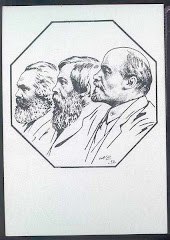





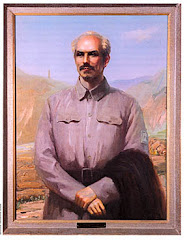


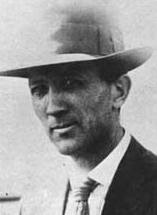





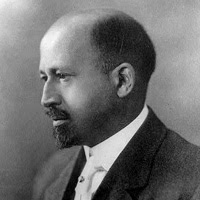

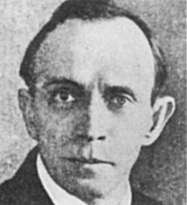



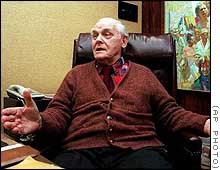




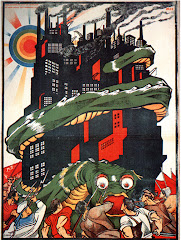


January, 2007
I think those opposed to “vanguardism,” or even those in favor of it, often have their own definitions of the term that are too narrow.
For instance, at any given time, I find it useful to try to figure out the proportions of advanced, middle and backward among the general population in regards to politics. The backward are those who like and defend the existing order of oppression, the middle don’t want to be bothered with politics all that much because it doesn’t make sense in their daily lives and they are focused on themselves and family, and the advanced are those who see the present order as unfair, unjust and/or oppressive and would like to do something to change it.
Only if certain conditions are met, including one very practical but often ignored factor: your group gets to be a LEADER if it has FOLLOWERS.
This seems clear as day to me, but we still have dozens of groups running around claiming to be the leader, but they don’t have any followers or supporters to speak of. They have the mistaken notion that a ‘correct line’ or ‘scientific program’ is sufficient, even granting that there is such a thing. Myself, I’ve come to the conclusion that I much prefer to work in groups that deal in ‘fruitful working hypotheses’ rather than ‘correct lines.’
Alan Maki needs to study more critical history of the CPUSA: its true that their militants at the local level did some fine grassroots organising at times, and they made an important contribution to the building of the industrial unions. But at the national level (and it couldn’t help but filter down to the rank and file) they alternated between ultraleftism and class collaboration. In three periods – the “third period” 1928-c.34, the years of the Hitler-Stalin pact, 1939-41; and the war years, 1942-5 – they played a sectarian and destructive role in the labour movement (both ultraleft and class-collaborationist at different points in time). If you draw up a balance sheet of this, it would look like a pretty negative one overall to me.